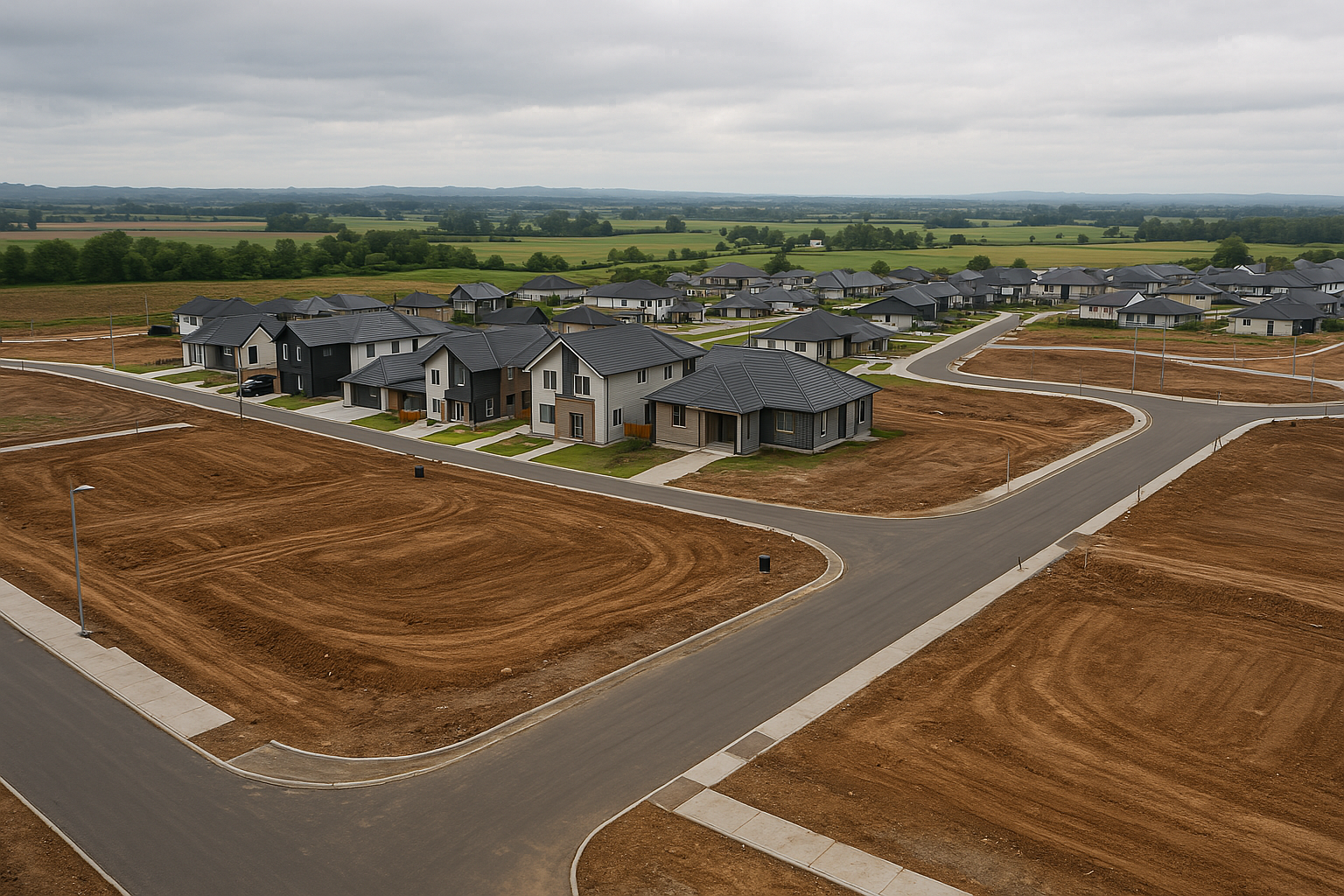Govt Unveils $100M Greenfield Push to Accelerate Housing on City Outskirts
Under the new model, NIFFCo will lend to a Special Purpose Vehicle (SPV) established under the Infrastructure Funding and Finance Act.

- Country:
- New Zealand
In a major move aimed at alleviating New Zealand’s persistent housing crisis, Housing and Infrastructure Minister Chris Bishop has announced a suite of immediate policy changes to accelerate homebuilding on the outskirts of cities. The government will inject $100 million into a new “Greenfield Model” designed to streamline infrastructure funding and reduce the regulatory burden on land development. The reforms, announced this week, also include significant changes to land use protections that could unlock vast areas for residential growth.
$100 Million in Low-Cost Loans for Developers
At the heart of the new plan is the creation of a $100 million lending facility that will be made available to housing developers for essential infrastructure in greenfield developments—new residential communities built on previously undeveloped land. The funding will be provided through the National Infrastructure Funding and Financing Agency (NIFFCo) and is aimed at bridging the risky and expensive development phase, which often hinders housing supply.
Under the new model, NIFFCo will lend to a Special Purpose Vehicle (SPV) established under the Infrastructure Funding and Finance Act. These loans will carry interest rates lower than what private financiers typically charge for early-stage developments, reducing the upfront burden on developers. Once the developments are completed, the debt will be refinanced on the private market, and future homeowners will repay the loans through annual levies.
“This is about unlocking land and reducing the cost and risk for developers to get homes built faster,” said Bishop. “Too many projects get stuck because developers can’t secure affordable capital for the infrastructure stage. Our Greenfield Model changes that.”
Removing Red Tape: RMA and Land Use Reform
In tandem with the funding support, the government is also pushing ahead with urgent reforms to the Resource Management Act (RMA), which many developers have long blamed for slowing down housing projects. These RMA reforms are part of the broader “Going for Housing Growth” policy package, but Bishop noted that full implementation will take time—hence the need for these stopgap measures.
As a further interim step, the government will eliminate LUC-3 protections from the National Policy Statement on Highly Productive Land (NPS-HPL), a move expected to dramatically increase the availability of developable land on city fringes.
The NPS-HPL currently protects about 15% of New Zealand’s total landmass from development, including LUC (Land Use Capability) classes 1, 2, and 3 soils. However, nearly two-thirds of that protected land is classified as LUC-3—the lowest tier of the three.
“While protecting our most productive land is important for food security, we need to strike a better balance between housing and agriculture,” Bishop said. “Removing LUC-3 protections will open up a significant area for development, potentially equivalent to the size of the Waikato region.”
Protecting Prime Agriculture While Building Homes
To ensure that essential food-producing regions remain safeguarded, the government plans to consult on the creation of “special agriculture zones.” These zones would provide ongoing protection for clusters of high-quality soils—LUC 1, 2, and 3—particularly in key horticultural areas like Pukekohe and Horowhenua.
“We’re not abandoning our commitment to agricultural productivity,” said Bishop. “But we have to be realistic. Some of the land currently protected isn’t truly essential to our food supply, and we can use it more effectively to solve the housing crisis.”
The Minister emphasized that these changes are temporary, designed to serve as a bridge until broader systemic reforms are fully enacted.
A Strategic Shift Toward Urban Growth
The newly announced measures reflect the government’s evolving strategy for urban growth—one that includes both densification and expansion. Bishop stressed the need for cities to “grow up and out” by supporting both intensification in existing urban areas and greenfield development on the periphery.
Medium-sized greenfield developments, in particular, are seen as a key part of the solution to ramping up housing supply in a cost-effective and scalable way. Yet without government intervention, many such projects would either stall or never begin due to financing hurdles and land-use restrictions.
“These are smart, short-term, cost-effective interventions while we fix the underlying system,” said Bishop. “They will enable housing projects that otherwise would have been delayed or scrapped entirely.”
Looking Ahead
Initial lending through the Greenfield Model is expected to begin soon, with projects selected from NIFFCo’s pipeline of potential greenfield developments. The government says the capital will be recycled over 5–7 year development periods, allowing the program to continue funding future projects as current ones are completed.
Consultation on the special agriculture zones is set to begin shortly, with a view to amending the NPS-HPL later this year.
With these measures, the government is taking a dual-pronged approach to housing: speeding up supply now while laying the groundwork for longer-term reform. If successful, this approach could go a long way toward easing the pressure on housing markets in major urban centres—and deliver more homes, more quickly, to the New Zealanders who need them most.










